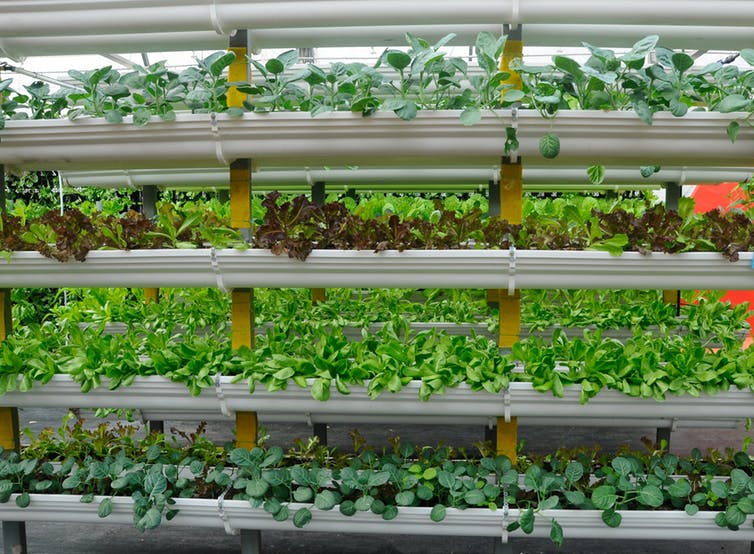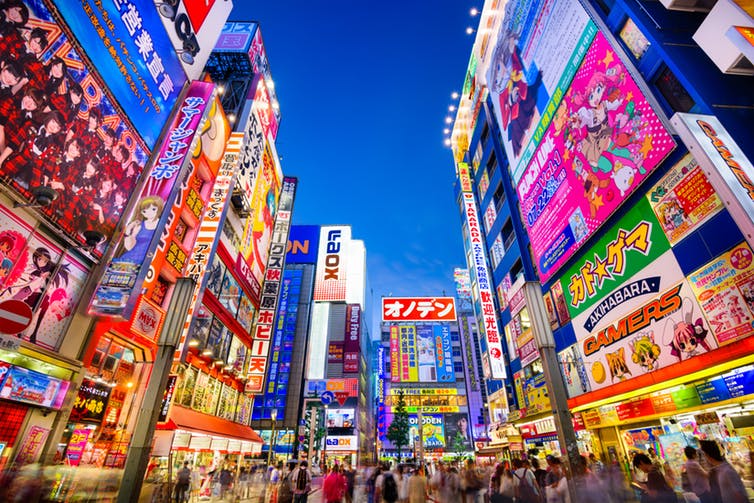Robot cities: Three urban prototypes that could revolutionise our lives
Governments have started to see automation as the key to brighter urban futures. But what will this look like?

Your support helps us to tell the story
From reproductive rights to climate change to Big Tech, The Independent is on the ground when the story is developing. Whether it's investigating the financials of Elon Musk's pro-Trump PAC or producing our latest documentary, 'The A Word', which shines a light on the American women fighting for reproductive rights, we know how important it is to parse out the facts from the messaging.
At such a critical moment in US history, we need reporters on the ground. Your donation allows us to keep sending journalists to speak to both sides of the story.
The Independent is trusted by Americans across the entire political spectrum. And unlike many other quality news outlets, we choose not to lock Americans out of our reporting and analysis with paywalls. We believe quality journalism should be available to everyone, paid for by those who can afford it.
Your support makes all the difference.Before I started working on real-world robots, I wrote about their fictional and historical ancestors. This isn’t so far removed from what I do now. In factories, labs, and of course science fiction, imaginary robots keep fuelling our imagination about artificial humans and autonomous machines.
Real-world robots remain surprisingly dysfunctional, although they are steadily infiltrating urban areas across the globe. This fourth industrial revolution driven by robots is shaping urban spaces and urban life in response to opportunities and challenges in economic, social, political and healthcare domains. Our cities are becoming too big for humans to manage.
Good city governance enables and maintains smooth flow of things, data, and people. These include public services, traffic, and delivery services. Long queues in hospitals and banks imply poor management. Traffic congestion demonstrates that roads and traffic systems are inadequate. Goods that we increasingly order online don’t arrive fast enough. And the wifi often fails our 24/7 digital needs. In sum, urban life, characterised by environmental pollution, speedy life, traffic congestion, connectivity and increased consumption, needs robotic solutions – or so we are lead to believe.
In the past five years, national governments have started to see automation as the key to (better) urban futures. Many cities are becoming test beds for national and local governments for experimenting with robots in social spaces, where robots have both practical purpose (to facilitate everyday life) and a very symbolic role (to demonstrate good city governance). Whether through autonomous cars, automated pharmacists, service robots in local stores, or autonomous drones delivering Amazon parcels, cities are being automated at a steady pace.
Many large cities (Seoul, Tokyo, Shenzhen, Singapore, Dubai, London, San Francisco) serve as test beds for autonomous vehicle trials in a competitive race to develop “self-driving” cars. Automated ports and warehouses are also increasingly automated and robotised. Testing of delivery robots and drones is gathering pace beyond the warehouse gates. Automated control systems are monitoring, regulating and optimising traffic flows. Automated vertical farms are innovating production of food in “non-agricultural” urban areas around the world. New mobile health technologies carry promise of healthcare “beyond the hospital”. Social robots in many guises – from police officers to restaurant waiters – are appearing in urban public and commercial spaces.

As these examples show, urban automation is taking place in fits and starts, ignoring some areas and racing ahead in others. But as yet, no one seems to be taking account of all of these various and interconnected developments. So how are we to forecast our cities of the future? Only a broad view allows us to do this. To give a sense, here are three examples: Tokyo, Dubai and Singapore.
Tokyo
Currently preparing to host the Olympics 2020, Japan’s government also plans to use the event to showcase many new robotic technologies. Tokyo is therefore becoming an urban living lab. The institution in charge is the Robot Revolution Realisation Council, established in 2014 by the government of Japan.

The main objectives of Japan’s robotisation are economic reinvigoration, cultural branding and international demonstration. In line with this, the Olympics will be used to introduce and influence global technology trajectories. In the government’s vision for the Olympics, robot taxis transport tourists across the city, smart wheelchairs greet Paralympians at the airport, ubiquitous service robots greet customers in 20-plus languages, and interactively augmented foreigners speak with the local population in Japanese.
Tokyo shows us what the process of state-controlled creation of a robotic city looks like.

Singapore
Singapore, on the other hand, is a “smart city”. Its government is experimenting with robots with a different objective: as physical extensions of existing systems to improve management and control of the city.
In Singapore, the techno-futuristic national narrative sees robots and automated systems as a “natural” extension of the existing smart urban ecosystem. This vision is unfolding through autonomous delivery robots (the Singapore Post’s delivery drone trials in partnership with AirBus helicopters) and driverless bus shuttles from Easymile, EZ10.
Meanwhile, Singapore hotels are employing state-subsidised service robots to clean rooms and deliver linen and supplies and robots for early childhood education have been piloted to understand how robots can be used in pre-schools in the future. Health and social care is one of the fastest growing industries for robots and automation in Singapore and globally.
Dubai
Dubai is another emerging prototype of a state-controlled smart city. But rather than seeing robotisation simply as a way to improve the running of systems, Dubai is intensively robotising public services with the aim of creating the “happiest city on Earth”. Urban robot experimentation in Dubai reveals that authoritarian state regimes are finding innovative ways to use robots in public services, transportation, policing and surveillance.
National governments are in competition to position themselves on the global politico-economic landscape through robotics, and they are also striving to position themselves as regional leaders. This was the thinking behind the city’s September 2017 test flight of a flying taxi developed by the German drone firm Volocopter – staged to “lead the Arab world in innovation”. Dubai’s objective is to automate 25 per cent of its transport system by 2030.
It is currently also experimenting with Barcelona-based PAL Robotics’ humanoid police officer and Singapore-based vehicle Outsaw. If the experiments are successful, the government has announced it will robotise 25 per cent of the police force by 2030.
While imaginary robots are fuelling our imagination more than ever – from Ghost in the Shell to Blade Runner 2049 – real-world robots make us rethink our urban lives.
These three urban robotic living labs – Tokyo, Singapore, Dubai – help us gauge what kind of future is being created, and by whom. From hyper-robotised Tokyo to smartest Singapore and happy, crime free Dubai, these three comparisons show that, no matter what the context, robots are perceived as means to achieve global futures based on a specific national imagination. Just like the films, they demonstrate the role of the state in envisioning and creating that future.
isiting research fellow at the University of Sheffield. This article was first published in The Conversation (theconversation.com)
Join our commenting forum
Join thought-provoking conversations, follow other Independent readers and see their replies
Comments